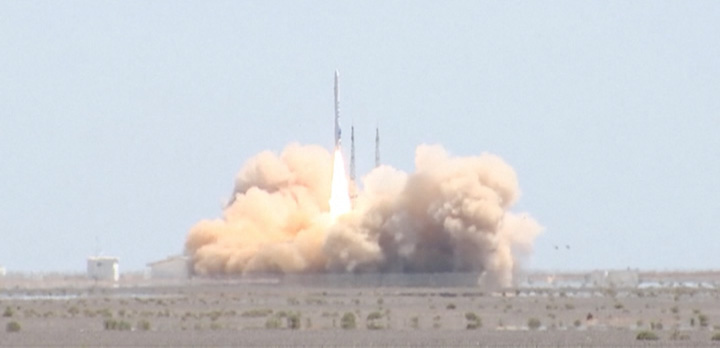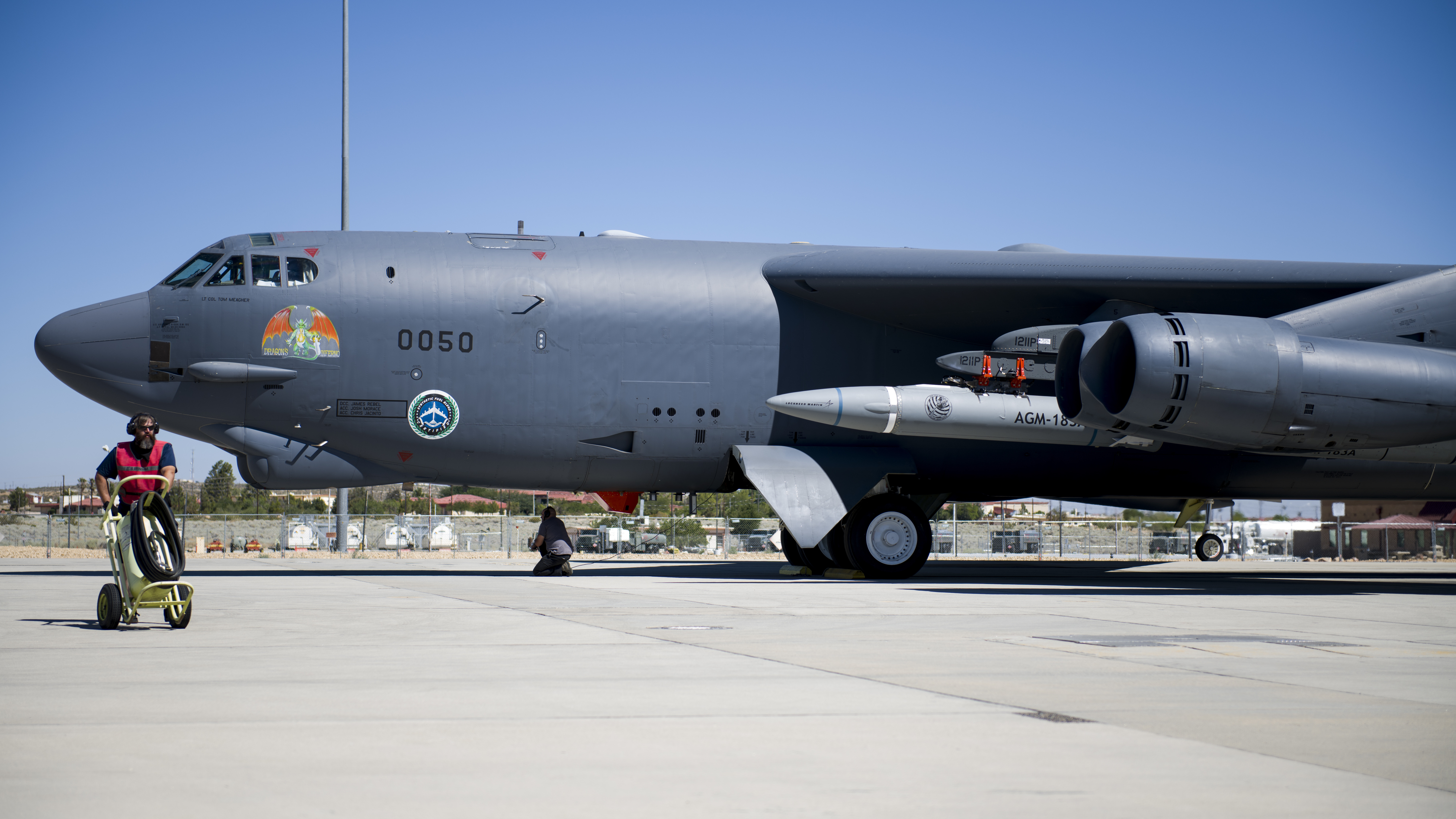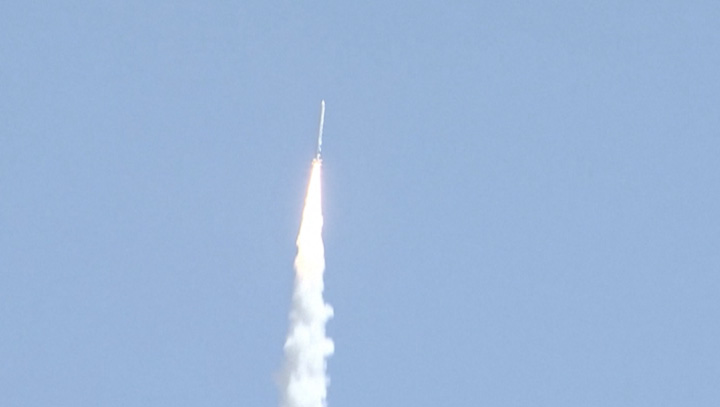The biggest launch failures (and recoveries) of 2021
The lessons learned from these incidents will inform future rocket launches.

Rocketry is hard, and international players in the industry are constantly trying to learn from any failures. The year 2021 saw more than 10 failures of various missions during or shortly after launch, from the United States to China to South Korea.
Below are the list of failed space missions this year and what we know about plans for the future.
1) iSpace Hyperbola-1 rocket failure

During Chinese company iSpace's second-ever launch attempt, the four-stage Hyperbola-1 rocket failed Feb. 1 during liftoff. Its satellite passenger, the cubesat-sized Fangzhou-2 (Ark-2), didn't make it to space.
"The rocket flew abnormally and the launch mission failed. The specific reasons are being further analyzed and investigated," Chinese state media source Xinhua said in a short media report at the time, which Space.com machine-translated using Google from Chinese to English.
While Chinese state media tends to give only basic information about failures, pictures from social media appeared to show problems with the rocket, NASASpaceflight.com said in a report.
"Available images from the launch show the vehicle in trouble after leaving the launch complex," the news site wrote. "Around the time of MaxQ [maximum air pressure upon the rocket during flight], smoke is [seen] coming from the frontal part of the launcher that disintegrated a few seconds later, with debris raining on the desert landscape around the launch site."
2) USAF hypersonic missile fails

An April 5 test launch of the AGM-183A Air-launched Rapid Response Weapon (ARRW) prototype booster did not go according to plan. It failed to deploy from its B-52H Stratofortress carrier aircraft, and the plane returned to Edwards Air Force Base in California with the missile still attached.
Breaking space news, the latest updates on rocket launches, skywatching events and more!
The system is designed to launch from midair during a flight, but as the United States Air Force said at the time, there are reasons why test launches are always held before declaring a system operational.
"The ARRW program has been pushing boundaries since its inception and taking calculated risks to move this important capability forward," Brig. Gen. Heath Collins, Armament Directorate Program Executive Officer, said in an Air Force statement. "While not launching was disappointing, the recent test provided invaluable information to learn from and continue ahead. This is why we test."
3) Rocket Lab Electron booster failure
A Rocket Lab Electron booster failed to reach orbit on May 15 after an anomaly during the first few minutes of the flight. Two Earth-observing satellites for the company BlackSky, their flight arranged by the firm Spaceflight, were lost during the incident.
The launch failure occurred less than three minutes after a launch from Rocket Lab's Launch Complex 1 on New Zealand's Mahia Peninsula, moments after the two stages of Electron separated.
"An issue was experienced during today's launch, resulting in the loss of the mission. We are deeply sorry to our launch customers BlackSky and Spaceflight," Rocket Lab wrote in a statement on Twitter after the failure. "The issue occurred shortly after stage two ignition."
Rocket Lab recovered from the incident and has executed several successful launches in the months since, closing off 2021 with a Dec. 7 launch dubbed "A Data With Destiny." That mission successfully deployed two other satellites for BlackSky.
4) Astra orbital test flight failure
Astra suffered an incident during an orbital test flight Aug. 28, after launching its two-stage Launch Vehicle 0006 from the Pacific Spaceport Complex on Alaska's Kodiak Island. The rocket had an anomaly about 2.5 minutes after liftoff and the flight was terminated.
Footage from the flight showed the rocket moving sideways, instead of upward, starting from the moment of liftoff. While the rocket recovered from that problem, it only made it about 20.5 miles (33 kilometers) into the sky before it shut down, according to real-time data available during the webcast from Astra.
"Although we did not achieve our primary objective today, our team will work hard to determine what happened here," Carolina Grossman, director of product management at Astra, said during the launch webcast. "And as we dig into the flight data, we are optimistic about the future and our next attempt."
Engineers figured out what to do, however, as on Nov. 20 the company reached orbit successfully for the first time. The company is planning more launches in 2022 and beyond.
5) iSpace Hyperbola-1 rocket fails again

Chinese company iSpace did not reach space as expected during a flight test Aug. 3, according to state media reports. The launch took place from the Jiuquan Satellite Launch Center in northwest China.
"Abnormal performance was identified during the flight of the rocket," Xinhua said in a brief report. "The satellite, carried by the rocket, did not enter orbit as scheduled."
The cause is presumably still being investigated and China has not yet announced another launch by iSpace. Typically China only makes such announcements when a launch is happening imminently, or has already occurred.
6) Indian Geosynchronous Satellite Launch Vehicle failure
The long-running Indian Geosynchronous Satellite Launch Vehicle suffered a failure during the launch of a new Earth observation satellite on Aug. 12.
Shortly after liftoff from the country's Satish Dhawan Space Centre on Sriharikota Island in eastern India, the Indian Space Research Organization reported, the third stage of the rocket failed to ignite as expected.
"Performance of first and second stages was normal. However, Cryogenic Upper Stage ignition did not happen due to technical anomaly," ISRO officials wrote in an update on Twitter. "The mission couldn't be accomplished as intended."
ISRO had intended to launch a high-tech Earth observation satellite called EOS-03, expected to last a decade and to provide full coverage of India. This was GSLV's first failure since 2017 and the rocket hasn't yet made another attempt for launch since the failure.
7) Explosion of Firefly Aerospace's first Alpha rocket
Firefly Aerospace's Alpha rocket launched on the company's first-ever orbital test flight on Sept. 2. After lifting off from Vandenberg Space Force Base in California, the rocket didn't make it to space. After 2.5 minutes of flight, the two-stage Alpha experienced an issue and exploded in a fireball.
"During the flight, the launch vehicle experienced an anomaly that resulted in a safe termination of flight by the Range using the flight termination system," Firefly later said in a statement.
"Initial review of flight data indicates that an electrical issue caused the shutdown of one of the four first stage Reaver engines. Firefly is conducting a thorough anomaly investigation and will report root cause of the anomaly at the end of this investigation."
Alpha's next test launch has not yet been scheduled. Lost in the failed launch was a collection of memorabilia submitted by schools and other educational institutions, several tiny satellites.
8) Satellite failure following successful Long March 3B rocket launch

A Long March 3B rocket launched successfully, according to reports, from the Xichang Satellite Launch Center in southwest China on Sept. 27. But the Shiyan-10 satellite was lost.
Chinese state media released a statement confirming the failure, saying the spacecraft was not functioning and was lost following an otherwise normal flight the day before, SpaceNews reported.
While the satellite was not recovered, Long March 3B has executed several more successful launches and satellite deployments since then in 2021, most recently on Dec. 13.
9) South Korea Nuri failure
South Korea's first launch of its new rocket, called Nuri, appeared to have a good debut launch on Oct. 21, but for some reason its mock payload did not get to the proper orbit.
"The Nuri has failed to complete its mission," Moon Jae-in, South Korea's president, said in a post-flight address as reported by English news site The Korea Herald. "Putting a payload into a targeted orbit remains unsolved, but sending the rocket into a 700-kilometer [430 miles] orbit itself is a great achievement."
Once Nuri executes its mission successfully (a new launch hasn't yet been announced), it will become South Korea's first rocket capable of lifting 1 ton into Earth orbit, which only six countries have accomplished domestically, according to the Yonhap News Agency: Russia, the U.S., France, China, Japan and India.
10) Kosmos 2551 failure and fall after launch
A failed Russian spy satellite called Kosmos 2551 came back to Earth Oct. 20, creating a fireball highly visible across the American Midwest.
The reconnaissance satellite launched on Sept. 9 but apparently had not adjusted its orbit since orbit, following some sort of a failure, satellite tracker Jonathan McDowell, who is based at the Harvard-Smithsonian Center for Astrophysics, tweeted about the mission.
Kosmos 2551's demise was not expected to be a threat to people on the ground. The satellite "is thought to be only about 500 kg [1,100 pounds] and no debris is expected to reach the ground," McDowell said in another tweet.
11) Expace Kuaizhou 1A failure

A Kuaizhou 1A solid rocket by Chinese commercial company Expace did not reach orbit Dec. 14 after launching from the Jiuquan Satellite Launch Center in the Gobi Desert.
Chinese state media confirmed the failure in a news report. "The rocket flew abnormally and the launch mission failed. The specific reasons are being further analyzed and investigated," read part of a short article that was machine-translated from Chinese.
The two satellites onboard, which were expected to help with driving navigation assistance on behalf of Geespace, also didn't make it. This is the first launch failure for Expace of its Kuaizhou-1A rocket type since September 2020. The company had experienced three successful rocket launches in September, October and November 2021.
Follow Elizabeth Howell on Twitter @howellspace. Follow us on Twitter @Spacedotcom and on Facebook.

Elizabeth Howell (she/her), Ph.D., was a staff writer in the spaceflight channel between 2022 and 2024 specializing in Canadian space news. She was contributing writer for Space.com for 10 years from 2012 to 2024. Elizabeth's reporting includes multiple exclusives with the White House, leading world coverage about a lost-and-found space tomato on the International Space Station, witnessing five human spaceflight launches on two continents, flying parabolic, working inside a spacesuit, and participating in a simulated Mars mission. Her latest book, "Why Am I Taller?" (ECW Press, 2022) is co-written with astronaut Dave Williams.
